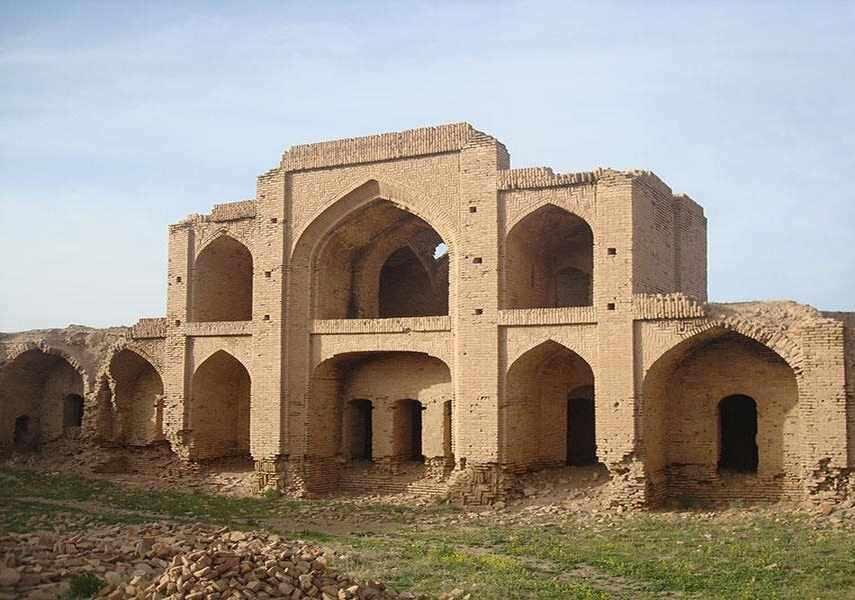Restoration completed on Qajar-era caravanserai

TEHRAN – An urgent restoration project on the Qajar-era (1789-1925) Shuryab Caravanserai in the city of Firouzeh, Khorasan Razavi province, has come to an end, the deputy provincial tourism chief has said.
The project involved strengthening the brick foundations of the structure, Ehsan Zohrevandi said on Monday.
The structure, which has been inscribed on the national heritage list, was one of the important historical inns in the region, the official added.
Located in Khorasan Razavi province, northeastern Iran, Firouzeh has some high-grade turquoise mines in the country. Cutting precious stones is the main profession of the people in this city.
Caravanserai is a compound word combining “caravan” with “serai”; the former stands for a group of travelers and the latter means the building. They often had massive portals supported by elevated load-bearing walls. Guest rooms were constructed around the courtyard and stables behind them, with doors in the corners of the yard.
Iran’s earliest caravanserais were built during the Achaemenid era (550 - 330 BC). Centuries later, when Shah Abbas I assumed power from 1588–to 1629, he ordered the construction of a network of caravanserais across the country.
For many travelers to Iran, staying in or even visiting a centuries-old caravanserai can be a wide experience; they have an opportunity to feel the past, a time travel back to a forgotten age.
Such roadside inns were once constructed along ancient caravan routes in the Muslim world to shelter people, their goods, and animals. The former Silk Road may be the most famous example dotted by caravanserais.
Cozy chambers that are meticulously laid out around a vast courtyard may easily evoke spirits of the past. It’s not hard to fancy the hustle and bustle of merchants bargaining on prices, recounting their arduous journeys to one another while their camels chewing hay! You can also conceive the idea of local architectural style and material in its heyday.
It’s not hard to fancy the hustle and bustle of merchants bargaining on prices, recounting their arduous journeys to one another while their camels chewing hay!
Passing major roads in the country, one may see crumbling caravanserais, many of which were abandoned for ages. In the Information Age, such guest houses have largely lost their actual usage.
However, a couple of years ago, the Iran tourism ministry introduced a scheme to keep them alive and profitable; tens of caravanserais are ceded to private investors for better maintenance. Now, some are exclusively renovated and repurposed into boutique hotels and tourist lodgings.
They often had massive portals supported by elevated load-bearing walls. Guest rooms were constructed around the courtyard and stables behind them, with doors in the corners of the yard.
ABU/AM
Leave a Comment